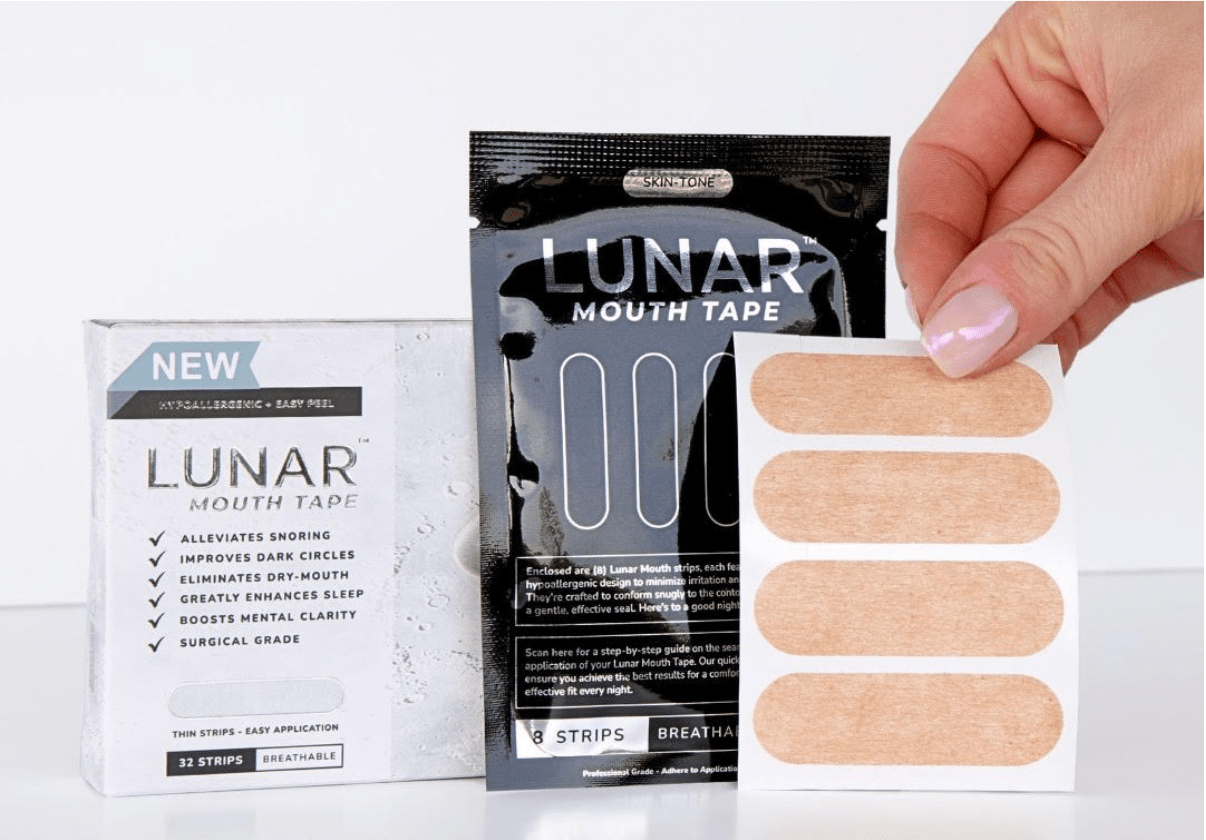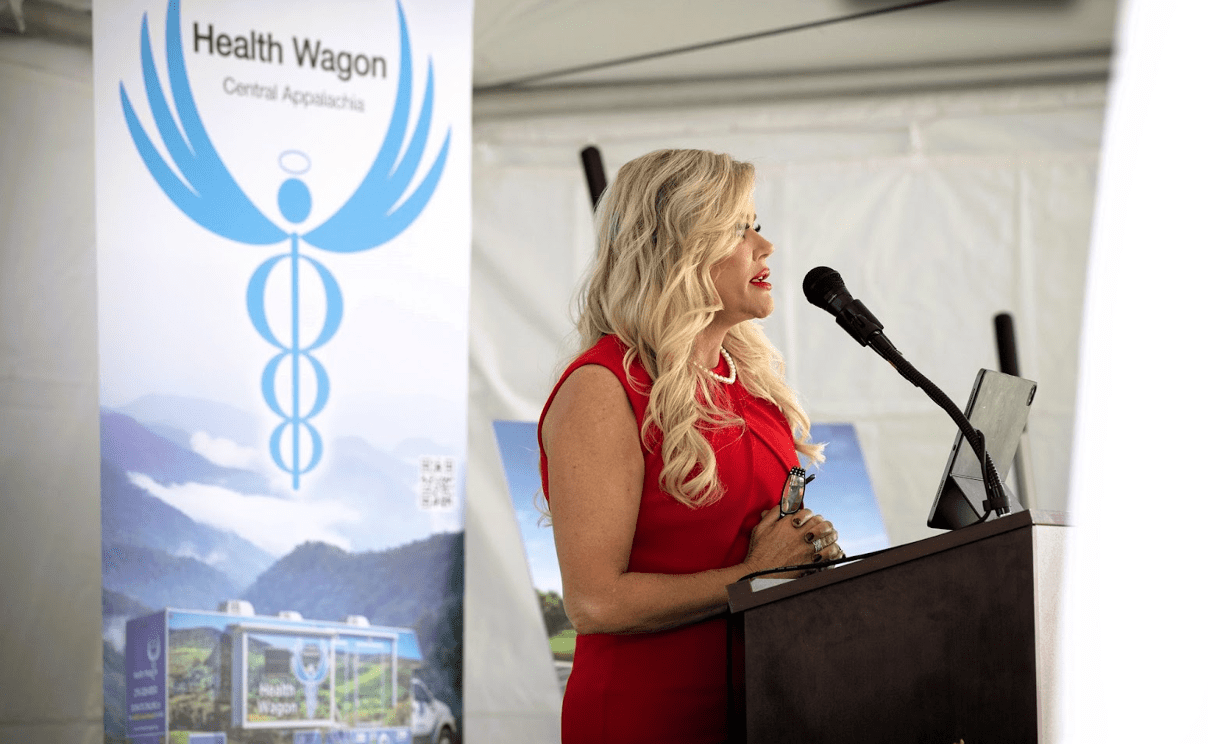Health
Breaking the Cycle of Snoring: Lunar Tape Offers a Simple Yet Effective Solution

Byline: Katreen David
Every single day marks a turning point for technology. With no brakes in sight on the evolution train, the world is transforming into a more efficient place. On the other hand, there are times when technology gets so complicated that it tends to be a brain teaser to understand all its glorious intricacies fully. This is when the essence of going back to basics enters the conversation.
“We live in the digital age, so even sleep aids are becoming increasingly complex and high-tech. Despite this ongoing technological growth, simplicity is coming back,” says Dr. Tomek Pajak, founder of Lunar Mouth Tape. Pajak’s brand stands out in the crowded sleep and wellness market, drawing attention for its refreshingly straightforward strategy to improve sleep quality and overall well-being.
The quest for snore-free slumber has evolved dramatically from ancient remedies to modern solutions. Today’s wellness enthusiasts face a plethora of options ranging from sophisticated gadgets to intricate supplements. Yet, amid this technological deluge, Lunar Mouth Tape steps into the limelight with a minimalist solution, proving that sometimes, less really is more.
The Health Implications of Snoring: More Than Just an Annoyance
People often dismiss snoring as a minor inconvenience, but chronic snoring can signal more serious underlying health issues, such as sleep apnea.
Untreated sleep apnea can have health implications that extend beyond disrupted sleep. Chronic oxygen deprivation can lead to a range of serious conditions, including hypertension, cardiovascular disease, and diabetes.
Research shows that individuals with sleep apnea are at a significantly higher risk of developing heart problems, such as arrhythmias and heart attacks. Furthermore, sleep apnea can cause daytime fatigue, cognitive impairment, and an increased risk of accidents due to drowsiness.
Effective solutions like Lunar Mouth Tape, which promotes nasal breathing, can help minimize risks associated with mild sleep apnea. However, for those who suspect they might have a severe case of sleep apnea or another serious sleep disorder, consulting with a healthcare professional remains crucial.
A Breath of Fresh Air for Wellness Enthusiasts
Lunar Mouth Tape’s appeal extends beyond its primary sleep-enhancing benefits. Sports and wellness enthusiasts are discovering that the tape can also support better performance out on the field.
Improved nasal breathing during workouts enhances endurance and reduces mouth dryness, making it a versatile tool in a holistic wellness regimen.
Simplicity Meets Innovation: Don’t Sleep On It
As the sleep aid industry gets supercharged with products that promise wide-eyed results, Lunar Mouth Tape represents a refreshing return to simplicity. Driven by the straightforward science of nasal breathing, this brand does not need a complex explanation of why it works.
Dr. Pajak remains optimistic about the future of his product. “We are on the brink of something exciting and relaxing simultaneously,” he says.
Judging by how the world functions nowadays, it’s not hard to discern that wellness often equates to complexity and cost. Breaking free from this cliché, Lunar Mouth Tape showcases that the most phenomenal solutions can sometimes be the simplest.
Moreover, by eliminating snoring, the brand proves that a good night’s sleep doesn’t have to be a dream—it can be a nightly reality.
Health
Dr. Teresa Tyson, DNP, Discusses The Hidden Healthcare Crisis in Remote Regions

Image source: Dr. Teresa Tyson, DNP, and Health Wagon
Access to healthcare remains a challenge for many individuals living in rural and remote areas, where medical facilities are scarce or difficult to reach. Many residents endure long travel times for even basic medical services, leading to delayed diagnoses and worsening health conditions. The lack of healthcare professionals further compounds the issue, leaving communities with inconsistent or inadequate care.
While technology and government initiatives have made strides in addressing these disparities, Dr. Teresa Tyson, DNP, notes how there are many obstacles still hindering widespread improvement. Bridging the healthcare gap requires a combination of innovative solutions, infrastructure development, and policy changes to ensure that medical services reach those who need them most.
Limited Access to Medical Care
Many remote regions struggle with a severe lack of healthcare facilities, leaving residents with minimal options for medical treatment. Hospitals and clinics are often located hours away, making even routine checkups a logistical challenge.
A shortage of medical professionals further worsens the situation, as many doctors and nurses prefer to work in urban areas with better resources and career opportunities. As a result, rural communities often rely on understaffed clinics or visiting healthcare workers who may not be available consistently. This leads to delayed diagnoses and inadequate treatment for chronic conditions. Many rural clinics operate with limited medical supplies, making it difficult to provide comprehensive care even when healthcare professionals are available.
In some cases, patients must travel long distances just to receive basic care, often at great personal and financial costs. The burden of transportation, time off work, and the uncertainty of available treatment discourage many from seeking medical attention until their conditions become severe.
Health Risks and Consequences
Delays in medical care often mean that conditions that could have been treated early turn into serious health complications. Many individuals in remote areas develop chronic illnesses that go undiagnosed for years simply because healthcare services are too far away or difficult to access. Diseases that are manageable with regular monitoring, such as diabetes or hypertension, frequently spiral out of control due to the lack of consistent medical supervision.
Beyond physical health, the absence of adequate healthcare also takes a toll on mental well-being. Isolation and limited access to mental health professionals leave many struggling with anxiety, depression, and other psychological conditions without proper support. In small, tight-knit communities, stigma around mental health can make it even harder for individuals to seek help, further exacerbating the crisis.
Preventable diseases continue to spread in these areas due to the lack of vaccinations, screenings, and early interventions. Without proper healthcare infrastructure, outbreaks of common illnesses can have devastating effects, particularly on children and the elderly. The combination of poor access, financial barriers, and limited awareness creates a cycle where minor health concerns escalate into life-threatening conditions.
Challenges in Expanding Healthcare Services
Building and maintaining healthcare infrastructure in remote regions comes with considerable hurdles. Poor road conditions and unreliable transportation make it difficult for medical professionals to reach patients, and in some cases, ambulances are unavailable, forcing residents to rely on personal vehicles or community efforts to transport those in need. In areas with extreme weather conditions, seasonal challenges further complicate healthcare delivery, cutting off entire communities during certain times of the year. These conditions make it nearly impossible for emergency medical teams to provide timely assistance in critical situations.
Funding remains a major obstacle, as rural healthcare facilities often struggle with limited financial resources. Many small clinics operate on tight budgets, lacking essential medical equipment and supplies. Without sufficient investments, these facilities cannot expand their services, making it harder to attract and retain qualified healthcare workers. As a result, many professionals opt to work in urban settings where they have access to better salaries, career advancement, and modern medical technology.
Role of Technology in Bridging the Gap
Advancements in technology are offering new ways to connect patients in remote areas with medical professionals. Telemedicine has made it possible for individuals to consult doctors without having to travel long distances, reducing delays in diagnoses and treatment. Virtual consultations, remote monitoring, and mobile health apps allow patients to receive medical advice without needing to visit overcrowded or distant healthcare facilities. In addition to telemedicine, artificial intelligence is being used to assist in diagnosing conditions remotely, helping bridge the gap in specialist care.
Despite its potential, implementing technology-driven healthcare solutions in rural regions is not without obstacles. Many areas lack reliable internet access or the necessary digital literacy to make full use of telehealth services. Even when technology is available, the cost of devices and connectivity can create another barrier, preventing low-income households from benefiting fully. Addressing these issues requires a combination of infrastructure development, education, and financial support to ensure that technology can be effectively integrated into rural healthcare systems.
Efforts to Improve Rural Healthcare
Governments and nonprofit organizations are actively working to address the healthcare challenges faced by remote communities. Investment in medical outreach programs, mobile clinics, and training initiatives for local healthcare workers has helped bring essential services to those who need them most. Some regions have introduced incentive programs to encourage doctors and nurses to work in underserved areas, offering student loan forgiveness, housing assistance, or higher salaries.
Community-led initiatives also play a crucial role in improving healthcare access. Local volunteers and advocacy groups often step in to provide educational workshops, vaccination drives, and wellness programs tailored to the specific needs of their communities. These grassroots efforts help bridge gaps where formal healthcare systems fall short, ensuring that residents receive at least some level of medical support.
Future Prospects for Remote Healthcare
Innovations in medical technology, policy changes, and raising awareness are shaping the future of rural healthcare. The expansion of telehealth services, combined with improved infrastructure, has the potential to make healthcare more accessible and efficient. Continued investment in mobile medical units and community-based programs could ensure that even the most isolated areas receive the care they need. Research into low-cost, portable medical devices is also opening new doors for remote diagnostics and treatment.
Sustained progress will depend on collaboration between governments, healthcare providers, and local communities. Long-term solutions require more than temporary programs; they demand systemic changes that prioritize equitable medical access. If these efforts continue to grow, rural healthcare systems may finally move toward lasting improvements that benefit future generations.
-

 Tech4 years ago
Tech4 years agoEffuel Reviews (2021) – Effuel ECO OBD2 Saves Fuel, and Reduce Gas Cost? Effuel Customer Reviews
-

 Tech6 years ago
Tech6 years agoBosch Power Tools India Launches ‘Cordless Matlab Bosch’ Campaign to Demonstrate the Power of Cordless
-

 Lifestyle6 years ago
Lifestyle6 years agoCatholic Cases App brings Church’s Moral Teachings to Androids and iPhones
-

 Lifestyle4 years ago
Lifestyle4 years agoEast Side Hype x Billionaire Boys Club. Hottest New Streetwear Releases in Utah.
-

 Tech6 years ago
Tech6 years agoCloud Buyers & Investors to Profit in the Future
-

 Lifestyle5 years ago
Lifestyle5 years agoThe Midas of Cosmetic Dermatology: Dr. Simon Ourian
-

 Health6 years ago
Health6 years agoCBDistillery Review: Is it a scam?
-

 Entertainment6 years ago
Entertainment6 years agoAvengers Endgame now Available on 123Movies for Download & Streaming for Free
